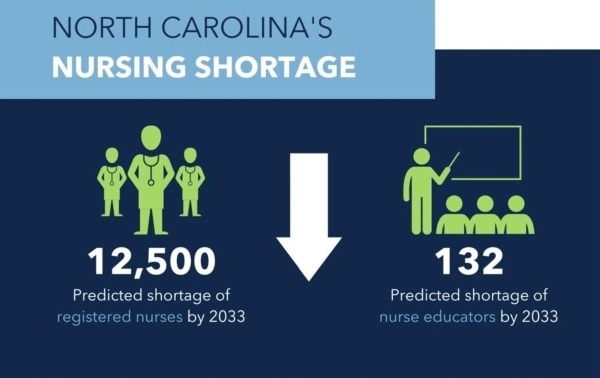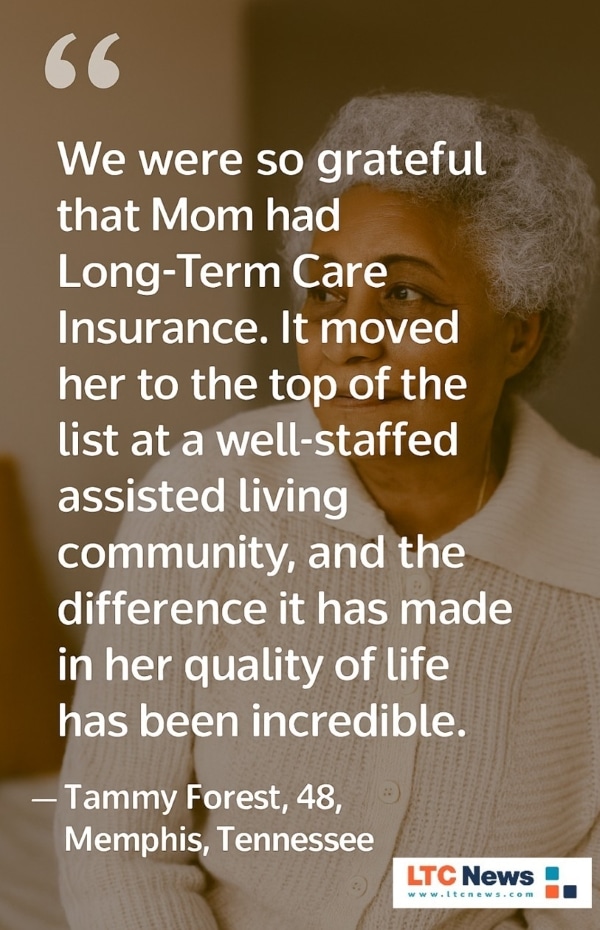When Every Shift Counts—Staffing Crisis in Long-Term Care Impacting Care Quality

Table of Contents
- How COVID-19 Accelerated the Problem
- Which Roles Are Most Affected
- Why The Numbers Matter
- How Staffing Impacts Quality of Care
- Increased Risk of Errors and Adverse Outcomes
- Reduced Personal Attention and Lower Quality of Life
- Operational and Financial Strain on Facilities
- Why Staffing Shortages Happen in Long-Term Care
- Practical Strategies to Rebuild the Workforce and Safeguard Care
You want to trust that the long-term care facility or home health agency caring for an aging family member has enough staff to provide safe, dignified care. Yet the staffing picture is now so dire that a rising number of providers say they simply don’t.
The shortage of caregivers and professional staff adds pressure on existing staff and can adversely affect the quality of extended care services provided to a loved one.
The full scope of the staffing crisis in long-term care is also increasing the cost of care services. Long-term care costs rise primarily with labor costs, but shortages mean higher wages to attract and retain staff.
Not everyone has Long-Term Care Insurance, so these additional costs increase the financial impact on a loved one who requires help with dialysis or supervision due to dementia. Even if someone has an LTC policy, they may find their benefits are not keeping up with increasing costs as much as they thought, although experts say that is much better than being fully responsible for the entire cost.
The Scope of the Long-Term Care Staffing Crisis
The staffing challenge in long-term care is vast—and growing. According to a survey by the American Health Care Association/National Center for Assisted Living (AHCA/NCAL), 86 percent of nursing homes and 77 percent of assisted living communities reported that their workforce situation had worsened over the past three months.
In that same survey, nearly every nursing home (99%) and assisted living facility (96%) reported staffing shortages.
A recent Kaiser Family Foundation analysis found that in 45 states, fewer than half of nursing homes met the three staffing standards outlined in the now-vacated federal rule, including minimum hours for certified nurse aides and registered nurses.
Even though the courts struck down the requirements in 2025 and CMS has moved to rescind them, the data shows how far many facilities remain from achieving safe, consistent staffing levels.
The shortfall is not just a staffing statistic; it has ripple effects on admissions, care quality, and the broader healthcare system. For example, a recent survey found that 58 percent of nursing homes reported limiting new admissions due to workforce shortages.
Amid an evolving labor landscape, rising costs, and growing care demands, the senior living sector continues to face considerable obstacles in attracting, retaining, and supporting its staff. — July 2025 Ziegler CFO Hotline survey.
How COVID-19 Accelerated the Problem
Though staffing shortages pre-dated the pandemic, the onset of COVID-19 created what might be described as a “perfect storm.” Long-term care facilities endured heavy job losses, especially in long-term care, which had some of the most vulnerable residents and the highest risks of virus spread.
Some studies found that nearly 87 percent of nursing homes reported moderate to high levels of staffing shortages during the pandemic. Post-COVID has eased some of this problem; however, the increased need for long-term care services due to aging-related issues continues to place pressure on extended care providers in all settings, experts tell LTC News.
Stress, fear of infection, burnout, and heavy workloads led many experienced staff to leave the profession, making recruitment even harder. When seasoned caregivers exit, the ripple effect is substantial.
Which Roles Are Most Affected
While the picture varies by region and facility, there are key patterns:
- Certified Nursing Assistants (CNAs) tend to have the highest turnover rates in long-term care, reflecting the physically and emotionally demanding nature of the work.
- Registered Nurses (RNs) are in high demand, and many facilities report major vacancies.
- Licensed Practical Nurses (LPNs) or Licensed Vocational Nurses (LVNs) can be scarce in rural and underserved areas, which tend to struggle more with recruiting these caregivers.
Why The Numbers Matter
Understaffing doesn’t just mean fewer people; it means fewer hands to respond when a resident calls, longer wait times for personal care (like bathing, toileting, repositioning), a higher incidence of missed preventive tasks, and more pressure on every shift.
Evidence links lower staffing ratios to worse outcomes, including more falls, more hospitalizations, and higher mortality. Home health agencies face the same staffing challenges in providing in-home care services to those who desire them.
In short, when every shift counts and there isn’t enough staff, your loved one has far less room for error—and that reality should never be taken lightly.
How Staffing Impacts Quality of Care
You depend on the staff at a long-term care facility or home health agency to provide attention, compassion, and clinical oversight. When staffing falls short, all parts of that care chain are strained, reducing the quality of care provided and the quality of life for the care recipient.
Nursing home residents and families depend on nursing homes to maintain sufficient staffing to meet their needs. — Centers for Medicare & Medicaid Services (CMS).
Increased Risk of Errors and Adverse Outcomes
The lack of staff or an overburdened staff increases the potential for errors and often leads to adverse outcomes.
When fewer staff are available, each caregiver has more residents to watch, more tasks to complete, and less time to respond.
Research shows that heavier patient-to-nurse ratios correlate with a greater risk of adverse events, such as:
- Falls and fall-related injuries
- Pressure ulcers (from delayed repositioning)
- Infections (from delayed hygiene or oversight)
- Medication errors
- Longer hospital stays and readmissions
Reduced Personal Attention and Lower Quality of Life
Beyond clinical outcomes, quality of life matters, especially for older adults in long-term care. When staffing is thin:
- Residents may wait longer for assistance with bathing, dressing, or toileting, for example.
- Scheduled activities or social interaction may be cut back.
- Staff may have less time to engage meaningfully with residents, such as reading, conversing, or observing subtle changes in condition.
- These things may seem less dramatic than a fall or hospital transfer, but they matter deeply for dignity, mental health, and well-being.
Operational and Financial Strain on Facilities
The staffing crisis also creates an operational crunch for facilities:
- They may limit admissions because they cannot safely care for more residents, given staffing constraints.
- They may rely more heavily on agency or temporary staff, which often costs more and may not know the residents or facility systems as well.
- Morale among remaining staff can suffer, leading to higher turnover, which becomes a vicious cycle.
State Views
In Texas, the KFF analysis found that only 5 percent or fewer facilities in several states (including Texas) currently meet all of the proposed minimum staffing standards. This illustrates how even in large states, staffing deficits are deep, and the potential risk to care quality is real.
In North Carolina, they are facing shortages in a state where many people come to when they retire.

Image Source: UNC School of Nursing - The University of North Carolina at Chapel Hill
As of late 2025, an LTC News review of federal data show that states such as Illinois, Missouri, Texas, New Mexico, West Virginia, Virginia, Georgia, New York, Oklahoma and Indiana sit at the bottom of national staffing rankings. On average, nursing homes in these states provide roughly 15 to nearly 40 percent fewer nursing hours than evidence-based benchmarks suggest residents need.
When you add the staffing needs of assisted living and memory care facilities, along with home health agencies, the demand for care, along with staff shortages, will become more problematic in the years ahead. Keep I mind that most long-term care is provided at home or in assisted living, although most Medicaid extended care is still provided in a nursing home.
Why Staffing Shortages Happen in Long-Term Care
To find solutions, you need to understand the root causes—and they are many, complex, and interconnected.
Low Wages and Better Opportunities Elsewhere
Caregiving jobs in long-term care typically pay significantly less than comparable roles in hospitals or other settings. Lower pay makes it harder to attract and keep staff. For example, long-term care direct-care workers had median wages well below those of other healthcare sectors.
Per diem staffing helps address unexpected shortages by giving facilities immediate access to qualified professionals when census changes or staffing disruptions occur. Healthcare workers can view and request open shifts in real time, ensuring coverage is filled quickly and efficiently. This flexibility reduces overtime costs from last-minute absences and supports consistent patient care.
Many organizations now rely on per diem staffing in healthcare as a practical way to maintain quality standards without the need for long-term hiring commitments.
The Physical and Emotional Toll of the Work
Long-term care work is demanding—physically (lifting, repositioning), emotionally (caring for frail residents, many with dementia or complex needs), and mentally (juggling multiple tasks under pressure).
Staff in nursing homes experience burnout more often and severely than their counterparts in other healthcare settings. Long-term stress shows up as mental exhaustion, work detachment, and reduced professional skills.
Many staff services are provided under time pressure, so retention becomes harder. The shortage of experienced staff then means that less-experienced workers carry heavier loads.
These caregivers deal with sick patients, witness suffering and death, and perform physically demanding tasks. On top of that, 37 percent of these workers struggle with low income, and 49 percent depend on some type of public assistance.
Limited Career Advancement Opportunities
Many direct-care workers want to advance (for example, from CNA to LPN or RN) but may face hurdles—time, cost, and education access. When advancement seems blocked, turnover tends to rise.
Funding and Reimbursement Constraints
Medicaid pays for most long-term care in the United States, even though you must have limited financial resources to qualify. Many nursing homes rely heavily on Medicaid reimbursement, which historically reimburses at levels below the actual cost of care.
That limits the resources a facility has for wages, staffing, training, and amenities. Some providers cite this as a key barrier to staffing improvement.
Facilities and home health agencies often prioritize people with Long-Term Care Insurance or those paying privately because they know those payments help sustain higher-quality care.
But providers that rely heavily on Medicaid face a much tougher challenge. With limited reimbursement, many struggle to maintain the staffing levels and care standards your loved one needs and deserves.
Practical Strategies to Rebuild the Workforce and Safeguard Care
There are several actionable approaches that long-term care providers are using to strengthen staff and improve care.
Recruitment Through Educational Partnerships
- Partner with local colleges, community colleges, or vocational schools to create “earn-and-learn” programs where students perform CNA or LPN work while pursuing credentials.
- Offer tuition assistance, sponsorships, or residency programs for new graduates of nursing or allied-health programs.
- Example: In one region, a nursing facility partnered with a university to boost clinical placements and new nurse graduates.
Retention Through Workplace Culture and Recognition
- Develop a strong recognition program that values and celebrates staff contributions.
- Build a culture of support: mentorship programs for new staff, regular check-ins, and emotional wellness support.
- Provide opportunities for advancement: clear career-ladders from CNA → LPN → RN, with tuition support and flexible scheduling.
- Offer competitive wages and benefits—recognizing that compensation is a key driver of retention.
Flexible Staffing Models & Cross-Training
- Cross-train staff to perform different functions (within licensure) so that when one role is short a shift, others can step in.
- Utilize per diem or float-pool staff wisely to manage unpredictable census changes or unplanned absences.
- Implement real-time scheduling systems or shift-app tools that let staff pick up open shifts, swap shifts, and improve their work-life balance.
- This flexibility helps reduce reliance on costly agency staff and maintains consistent care.
Technology as a Support Tool—Not a Replacement
Technology brings both good and bad news. There are tech solutions that can improve care, but they can't replace skilled caregivers.
Many facilities struggle with poor internet, limited funds, and staff who resist change. Rules haven't kept up with new technology, which makes facilities hesitate to use it. The key is to add technology in ways that help care professionals do their jobs better.
Technology cannot replace human caregivers, but it can augment their effectiveness:
- Electronic documentation systems can reduce the time spent on paperwork.
- Scheduling analytics can predict staffing needs based on resident acuity and census patterns.
- Assistive devices (such as lift-assist equipment) reduce caregiver physical burden and risk of injury.
However, technology must be implemented thoughtfully (staff training, infrastructure investment) and must enhance—not hamper—direct care time.
Final Thoughts
When you entrust someone’s care to a nursing home or home health agency, you expect them to have enough qualified, caring staff on every shift. The current staffing crisis threatens that expectation. But the solution is within reach—if organizations, communities and policymakers act now.
If you have a loved one who requires long-term care services, use the LTC News Caregiver Directory to narrow down your search. The directory has over 80,000 caregivers and long-term care facilities that you can search by zip code.
Check the facility’s staffing levels, ask about turnover, training, recognition, and career advancement opportunities. Ask how they cover unplanned absences, how they reduce overtime burden, and what support they give caregivers. Because when every shift counts, staffing isn’t just an operational number, it’s the foundation of safe, dignified care.
- If you are a long-term care provider, you can claim your free listing on the LTC News Caregiver Directory and/or upgrade the listing to enhance visibility and highlight your staff and services through the LTC News Directory Business Portal.
If your loved one has a Long-Term Care Insurance policy, make sure the admissions director or home health agency knows. Sharing that information early can move your loved one ahead of others who are relying solely on private funds or Medicaid and can open the door to better care options.

If your loved one has a Long-Term Care Insurance policy, make sure the admissions director or home health agency knows. Sharing that information early can move your loved one ahead of others who are relying solely on Medicaid and can open the door to better care options.
If there is no LTC policy, and your loved one has a life insurance policy, you could consider selling it for cash to cover the costs of extended care now.
👉 Get free professional help in processing a Long-Term Care Insurance claim for a loved one. LTC News partners with Amada Senior Care to provide free claim support with no cost or obligation. Their trained experts can walk you through the entire process and help you access benefits quickly and correctly — File a Long-Term Care Insurance Claim.
Experts also say long-term care should be part of any comprehensive retirement plan. If you haven’t yet considered Long-Term Care Insurance, now is the time to do it. Work with a specialist who understands long-term care planning so you receive accurate quotes and comparisons from the top companies offering long-term care solutions.


